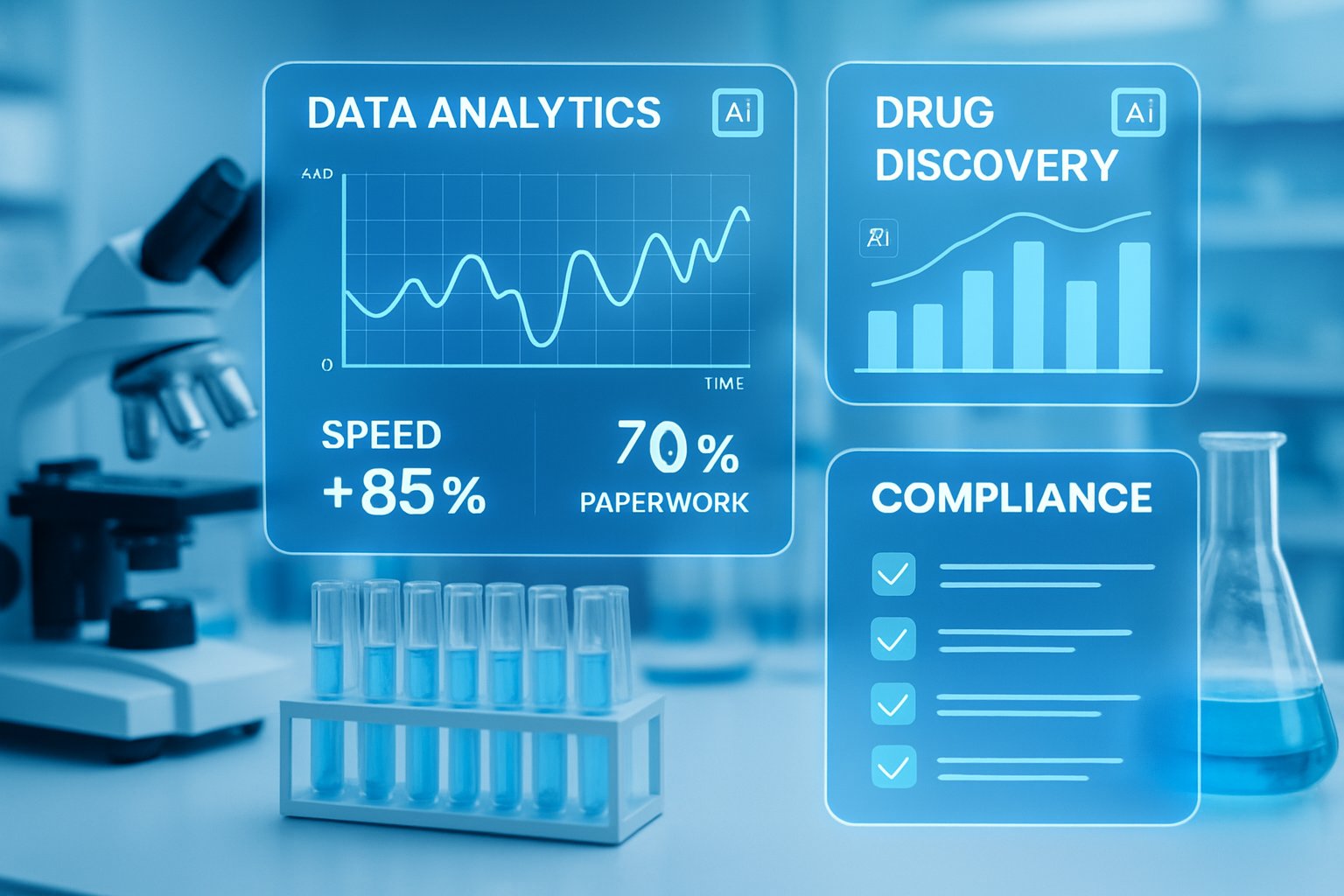
AI CERTS
4 hours ago
Anthropic’s Claude Debut Spurs Scientific AI Specialization Wave
Early pharma adopters, including Novo Nordisk, report paperwork reductions from weeks to minutes. Meanwhile, analysts forecast double-digit CAGR for AI in drug discovery, highlighting market urgency. Nevertheless, accuracy, biosecurity, and governance remain critical questions for any enterprise deployment. This article unpacks the offering, market context, and strategic implications for life-science leaders.
Market Forces Propel Adoption
Pharma R&D costs keep climbing while discovery success rates stagnate. Consequently, executives search for levers that compress timelines without ballooning risk. Precedence Research pegs AI drug discovery at USD 6.9 billion, growing toward USD 16.5 billion by 2034. Therefore, vendors race to deliver scientific AI specialization that aligns with strict industry regulations. Stakeholders demand tangible drug discovery acceleration to justify AI budgets.

Anthropic positions Claude as a trusted, compliant accelerator rather than a generic chatbot. In contrast, horizontal models often lack traceability and integration depth needed for regulated submissions. This positioning resonates with biopharma boards seeking both speed and auditability.
Market headwinds demand faster insights at lower cost. Subsequently, domain-tuned platforms like Claude are catching C-suite attention.
Inside Claude Verticalization Drive
Verticalization transforms a general LLM into a workflow-ready specialist. Anthropic achieves this scientific AI specialization through connectors, agent skills, and compliance controls. Benchling-PubMed-10x Genomics integration enables literature search, lab notebook access, and single-cell analytics without context switching. Moreover, agent skills encode repeatable methods, such as the single-cell-rna-qc routine.
Claude Sonnet 4.5 underpins the suite with extended context windows and 30-hour autonomous runs. On the Protocol QA benchmark, the model scored 0.83, outperforming human baselines. Additionally, improved BixBench performance boosts bioinformatics reliability.
These architecture choices embed scientific AI specialization deep into everyday lab tasks. However, connectors deserve a closer look.
Connector Ecosystem Highlights Growth
Anthropic launched with a dozen first-party connectors. Notably, the Benchling-PubMed-10x Genomics integration anchors scientific AI specialization for provenance. Furthermore, Databricks and Snowflake pathways support petabyte-scale omics pipelines.
Consultants like Deloitte and Accenture handle onboarding, governance mapping, and validation. Consequently, regulated customers gain a managed ramp rather than piecemeal scripting. Early pilots at Sanofi and Genmab indicate smooth electronic lab notebook harmonization.
- Provenance links to primary datasets for audit readiness.
- Real-time literature retrieval within experiment notebooks.
- Single-cell analytics without bespoke scripting.
- Secure cloud routing through AWS Marketplace contracts.
A robust connector mesh magnifies model value. Therefore, performance metrics translate into tangible workflow wins.
R&D Impact Metrics Unpacked
Novo Nordisk reports clinical documentation time dropping from ten weeks to ten minutes. Moreover, internal reviewers accepted Claude drafts, reinforcing scientific AI specialization credibility. Such results signal genuine drug discovery acceleration beyond marketing rhetoric.
Anthropic cites 95% productivity gains across protocol drafting and regulatory submission automation workloads. In contrast, manual workflows often require repetitive copy-paste between siloed systems. Long context windows allow full-study ingestion, supporting preclinical optimization with fewer human passes.
- 95% reduction in clinical paperwork time.
- 0.83 Protocol QA score surpassing human baseline.
- 30-hour autonomous agent runs demonstrated.
- Seamless drafting across 12 regulatory templates.
Early metrics suggest step-change efficiency across several pipeline stages. Nevertheless, leaders must weigh safety implications next.
Risks And Governance Priorities
Every transformative tool introduces new hazards. Hallucinations could corrupt protocols or filings, jeopardizing patient safety. Therefore, Anthropic embeds strict safeguards, including ASL-3 thresholds and red-team evaluations.
Independent policy experts still urge stronger oversight for dual-use biosecurity threats. Additionally, regulators expect audit logs for each generated paragraph supporting regulatory submission automation claims. Consequently, enterprises must establish review checkpoints and validation scripts. Robust monitoring ensures scientific AI specialization does not compromise patient safety.
Governance investments protect both patients and brand equity. Subsequently, attention shifts to competitive dynamics.
Competitive Landscape Snapshot Today
OpenAI, Google, and several startups pursue similar vertical strategies. However, Anthropic emphasizes scientific AI specialization and transparent safety processes. Mistral and Cohere focus on model compression, aiming for embedded lab devices.
Claude gains advantage through Benchling-PubMed-10x Genomics integration that competitors lack today. Moreover, marketplace availability on AWS simplifies procurement for risk-averse enterprises. Competitive pressure will accelerate innovation and pricing clarity.
The field remains fluid, rewarding early experimentation. Therefore, strategic guidance becomes essential.
Strategic Takeaways For Leaders
CIOs should pilot targeted use cases rather than boil the ocean. Begin with literature review, preclinical optimization, or regulatory submission automation where ROI surfaces quickly. Furthermore, establish cross-functional governance committees from day one.
Investors may favor vendors demonstrating verifiable scientific AI specialization and robust connector scope. Professionals can deepen expertise with the AI+ Healthcare™ certification. Additionally, regular benchmark audits preserve performance credibility.
Focused pilots, rigorous validation, and skills development build sustainable advantage. Consequently, leaders can harness Claude responsibly while maintaining compliance momentum.
Anthropic's Claude for Life Sciences illustrates how scientific AI specialization reshapes R&D. Connectors, agent skills, and marketplace channels combine to deliver measurable drug discovery acceleration. However, organizations must pair excitement with disciplined governance and continuous benchmarking. By piloting high-impact workflows and training teams, companies can realize faster preclinical optimization and compliant automation. Ready to lead the transformation? Explore Claude pilots and secure your edge with the linked certification today.



